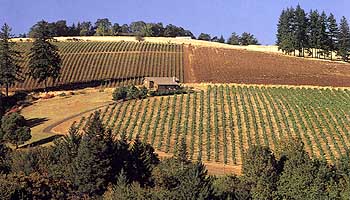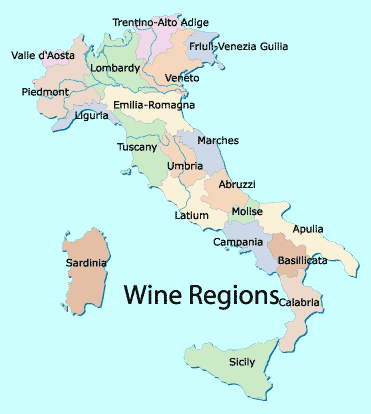|
Leo Chan was born in Macau and came to Canada in 1966. Active in hospitality and community affairs, Mr. Chan has held several senior positions with a number of major hotel and restaurant chains, and is currently serving as the Director of Site Operations for the Mandarin Restaurant Franchise Corporation. In this capacity, he is responsible for quality assurance and customer service at all of the Corporation’s franchises. Mr. Chan is also President of Cambridge Hospitality Consultants, and serves as Chairman of the Cambridge Food and Wine Society. In addition, he is a Professor Chef of Chinese Cuisine, Food and Beverage Cost Control and Mixology at George Brown College, Hospitality Centre in Toronto. The recipient of numerous achievement awards from both the industry and local community, Mr. Chan was one of the original members of Les Compagnons des vins de France, Toronto Chapter One, the German Wine Society, and is currently a member of the Opimian Wine Society as well. In 1997, Mr. Chan was elected to the Board of Directors of the Ontario Restaurant Association. In 2001 he completed an Italian Culinary D.O.P. course for Chefs by the Italian Trade Commission.
Director of Site Operations, Mandarin Restaurant Franchise Corporation (1996-Present); Professor Chef, George Brown College (1989-Present); General Manager, Red Lobster of Canada (1986-1988); Manager of Dining Services, Art Gallery of Ontario (1980-1985).
Executive, Cornell Society of Hotelmen, Toronto Chapter; President, Toronto Cathay Lions Club; Board of Governors, The Doctors Hospital, Toronto; Board of Directors, Ontario Science Centre; Board of Directors, Mon Sheong Foundation, Chinese Home for the Aged and Chinese School, Toronto; Advisor, Ontario Chinese Restaurant and Food Services Association; Advisor, The Art of Chinese Cuisine, Royal Ontario Museum; Catering Co-Chair, Dragon Ball Organizing Committee.
York University, Glendon College, B.A. (1973); Cornell University, Ithaca, New York (1980).
Married to Arlene Susan Lumb in 1976. Two children: Michael David and Ian Douglas. Mr. Chan enjoys family outings, gourmet cooking, gardening, soccer and vexillology. Internet users can reach him via an alternate e-mail address: leojkchan@yahoo.ca.
 Thank you for inviting me to speak at your next meeting on Wednesday, July 16, 2003 to be held at 7:00 p.m. at the New World Restaurant on Victoria Park Avenue. I am enclosing some background information about Italian wines and the Cambridge Society for your reference.
Thank you for inviting me to speak at your next meeting on Wednesday, July 16, 2003 to be held at 7:00 p.m. at the New World Restaurant on Victoria Park Avenue. I am enclosing some background information about Italian wines and the Cambridge Society for your reference.
On the evening of July 16, I will present a brief overview about wines from Italy and my recent visit to VinItaly 2003 in Verona. The four major Italian wine producing regions will be discussed and I will demonstrate the technique and etiquette of wine tasting. The subject of wine and food matching hopefully will also be of some interest to the Lions members.
Italy has 20 wine regions with specific geographical pattern that divide the country into four sections: The South and the Islands; Central section; North Central and Northwest section; Northeast section.
The South and the Islands include Calabria, Sardinia and Sicily. It is the oldest area with vineyards pioneered by the ancient Greeks and Romans. Marsala remains Sicily’s proudest wine.
 Central Italy is led by the famous red wine, Chianti from Tuscany, surrounding the historical city of Florence and the equally famous white wines, Verdicchio from the Marches region facing the Adriatic Sea and Frascati from the Lazio region around the national capital Rome.
Central Italy is led by the famous red wine, Chianti from Tuscany, surrounding the historical city of Florence and the equally famous white wines, Verdicchio from the Marches region facing the Adriatic Sea and Frascati from the Lazio region around the national capital Rome.
The north-central and northwest regions of Italy produce the noble red wine, Barolo from the Piedmont region as well as the world’s most popular sweet sparkling wine, Asti Spumante.
In the Northeast region of Veneto near Venice and Verona, the classic wines are the white Soave and the red Valpolicella. Legend has it that Romeo and Juliet were sampling a goblet of local wine together when he muttered ‘Soave!’, which Juliet took to be an endearment, ‘My sweet!’ Whereas Romeo was simply showing his appreciation of the sweet, soft wine! Verona still possesses sites where shouts of Montagues and Capulates once resounded.
The name Monte Veronese cheese or Grasso Monte dates back to the beginning of the century and denotes a high quality product made from milk that comes from south-facing pastures that permit grazing for longer than usual, making it particularly fine.
 Two lagoon cuisine are cuttlefish, whose ink is also used to make the famous risotto al nero (black rice), and baccala (the Venetians use this name to describe what elsewhere in Italy is called stoccafisso) of which the Venetian version made with polenta is most celebrated.
Two lagoon cuisine are cuttlefish, whose ink is also used to make the famous risotto al nero (black rice), and baccala (the Venetians use this name to describe what elsewhere in Italy is called stoccafisso) of which the Venetian version made with polenta is most celebrated.
Verona is the natural link between Venice and Milan and between the rest of Italy and many other European cities. Charles Dickens once wrote about the ancient city of Verona in his Pictures From Italy: “Pleasant Verona! With its beautiful old palaces, and charming country in the distance, seen from terrace walks, and stately, balustraded galleries.”
Verona, the city of the Arena and Romeo and Juliet, is a Mecca for tourists. The city itself is probably the most interesting among the district capitals of the Veneto due to its architecture, which ranges from the ancient Roman to the Medieval, the Renaissance and the Baroque.
A visit to its most important monuments must include a stop at the Church of San Zeno Maggiore, one of Italy’s masterpieces of Romanesque architecture, dedicated to the city’s first bishop. In the central Piazza Bra, the Roman Arena is the ancient amphitheater. Apart from the Colosseum in Rome, the Arena of Verona is the largest in Italy. It was built in the first century AD to hold some 25,000 spectators under the Emperor Flavius. The year 1913 was the centenary of the birth of Verdi, and the first production in the Verona Arena was fittingly his Aida.
 While I was in Verona, I attended a soccer game of the top Italian professional division between the local team and Juventus of Turin. Juventus is a legendary team founded in 1897 and is known affectionately as the “Old Lady” wearing their famous uniform with black and white stripes, in sharp contract to the Veronese team colours of blue and gold. Over 70,000 soccer fans attended the match.
While I was in Verona, I attended a soccer game of the top Italian professional division between the local team and Juventus of Turin. Juventus is a legendary team founded in 1897 and is known affectionately as the “Old Lady” wearing their famous uniform with black and white stripes, in sharp contract to the Veronese team colours of blue and gold. Over 70,000 soccer fans attended the match.
One of the many famous wine bars in Verona is Bottega del Vino, Ristorante Enoteca located on Via Scudo di Francia 3. (e-mail bottega.vino@ifinet.it) One can enjoy sampling countless wines and to be among wine lovers from all over the world. This popular meeting place opens from 10:30 a.m. to 3:00 p.m. and from 6:00 p.m. to midnight. It closes on Tuesdays.
The following terms will be most useful when one goes to any Italian eatery: Antipasto, the first course or starter; Primo, the rice, pasta or soup; Secondo, the fish or meat dish; Contorno, vegetables; Dolce, fruit, cheeses and desserts.
The Cambridge Food and Wine Society was established in 1988. Its members meet regularly for gourmet food and wine tasting and other educational activities. The Society has a library of over 1,000 books and periodicals on hospitality, conducts beer and wine tours and provides annual scholarships to accomplished high school students and community college students culinary and beverage management. The activities of the society are opened to non-members.
Contact the Society: e-mail: cambridgesociety@yahoo.ca

Wine Regions of Italy


